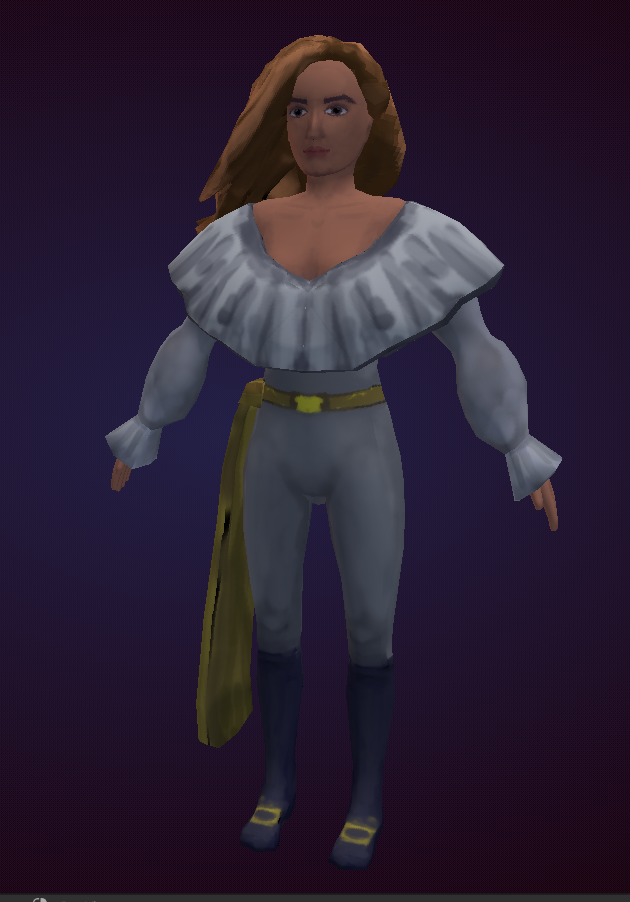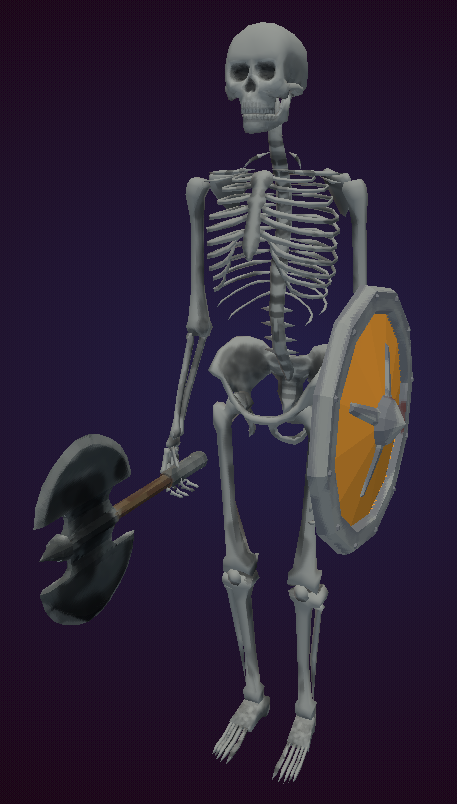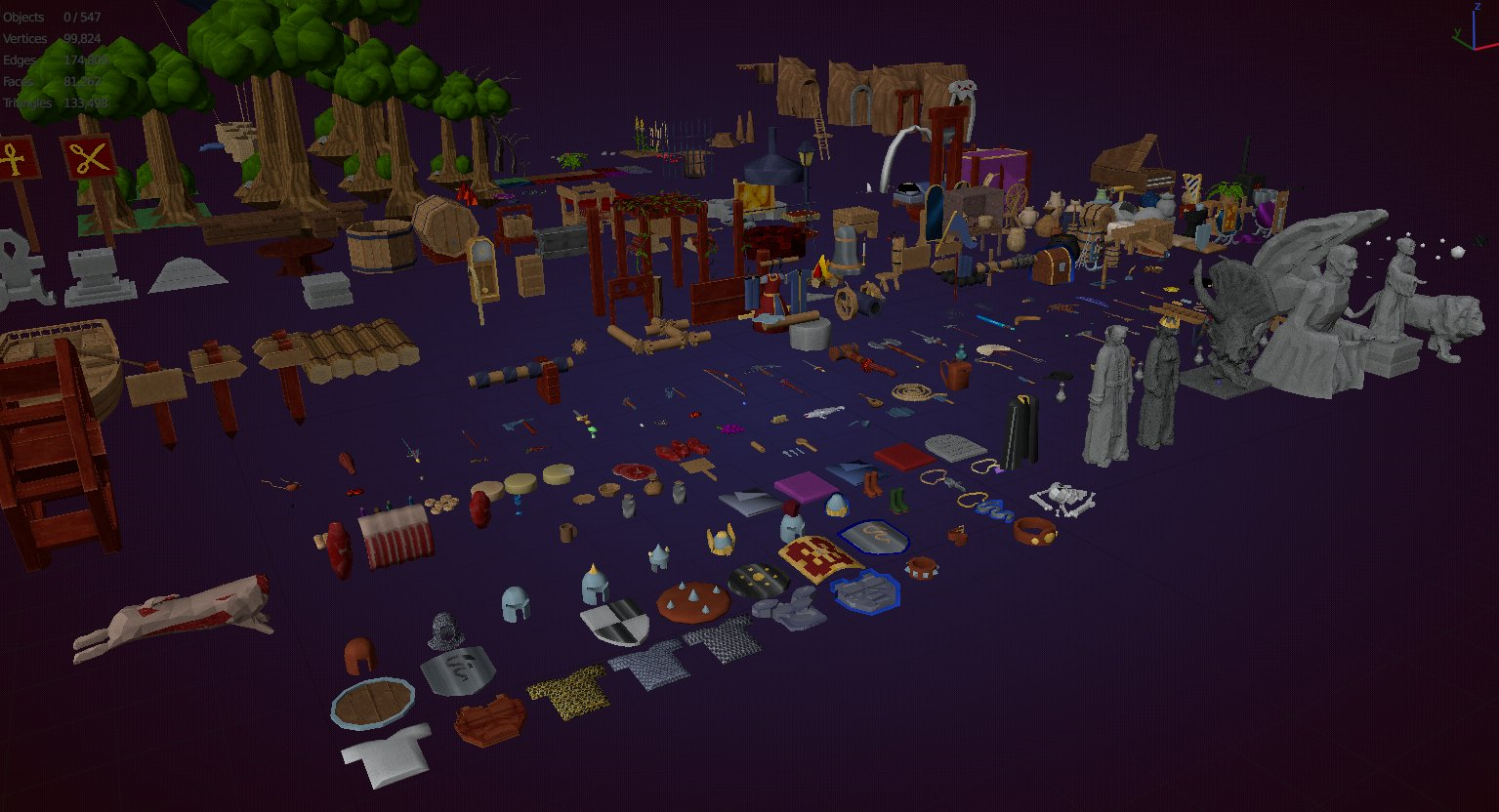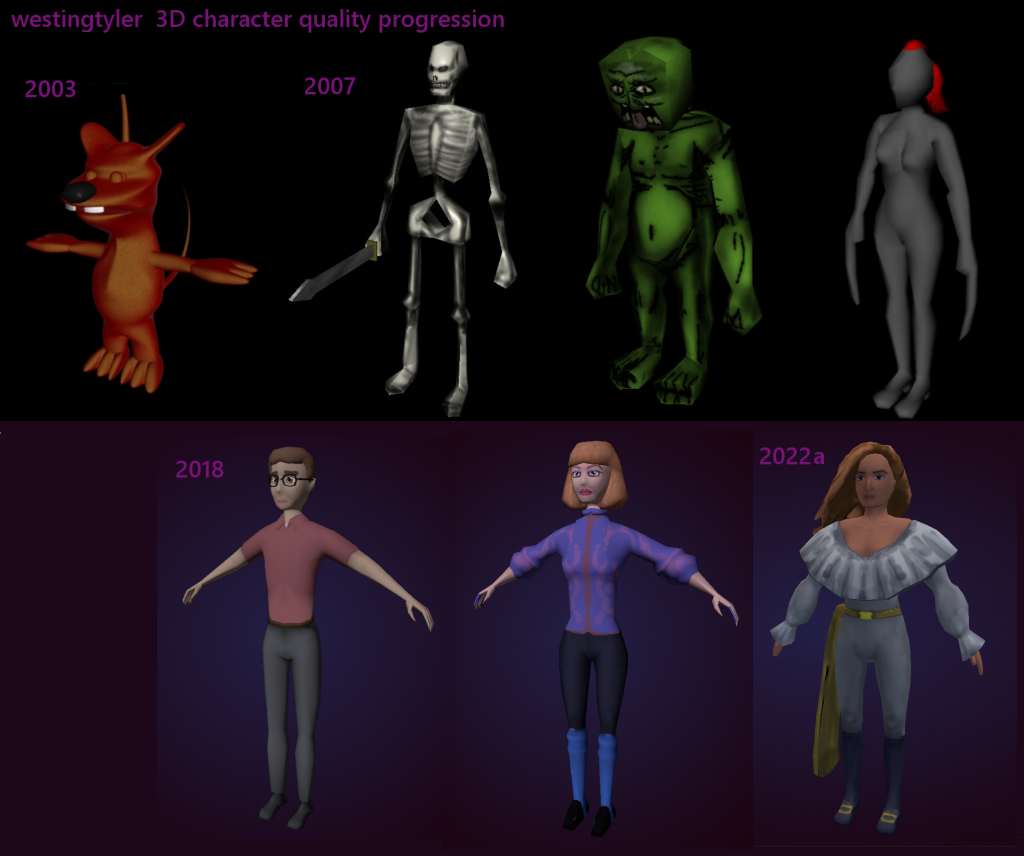|
3D Modeling Style
|
2022.04.25 |
Not Artificially Limiting One's Aesthetic Style
I’m making some models for a side project – Daggerfall Unity’s 3D model needs.
I did some modeling, only to discover there were
already great modelers there doing the exact
thing, so there was no need for me to duplicate
their great work. The knowledge gained has been
invaluable, though. I was going to make them low-poly like I’ve always made characters. I didn’t plan for my 3d models to be so round, but It’s where I’ve naturally ended up for a few reasons.
 
For my game #NotSSgame, I have hundreds of characters, animals, and monsters to create. My dream is for them to look like hi-poly Pixar characters, but I know my skills are not there and that that level of quality takes a lot of time per character. Performance is another concern since there are potentially a couple dozen characters trick-or-treating or engaging in town events on-screen at once, and it’s an open-world game that I want to function in mobile VR, so i get real paranoid about triangles, bones, and material draw calls.
I’ve gone with a low-poly aesthetic to make it practical to make hundreds of characters in a reasonable amount of time, and I don’t use Asset Store assets because they can look nice, and I want the quality to mix well with my skill level, so I say I want nothing to look better than I have the skill to maintain, augment, complement.
It would seem going really low-poly like Playstation 1 or Thief Gold, would be performant and also easiest to create. But I’ve found it’s not really true. Really low poly characters require a lot of time and energy to make best use of their economy to make them look, deform, and work great. The real time-save is in the simplified faces (and hands, but mecanim can handle hands for me).
I don’t innately care about the low-poly PS1 style, but I respect its economy and thought it was the best I could do. But with the low-poly PS1 style I realized I was limiting myself for no reason and making things look
lower-fidelity for no good reason. Just adding some more edge loops, getting good base meshes, with faces that COULD animate later, takes little extra effort up front and makes my models more future proof, since my main goal with all this is to build a database of mix and match assets I can use moving forward for my own game projects such as #NotSSgame.
It was a shock to me a couple of days ago when I made my first test character (the swordsman lady), and I realized it looked better than I thought I could do. I realized what had held my previous characters back had not been my skill alone, but the low poly counts and low texture resolutions I’d held myself to arbitrarily that 1) looked worse to me, and 2) wasn’t really ‘easier’ to make after all.
3) is overkill for performance for my game's
needs.
So now I think I’ve finally found the balance visually for a few details; I never liked GameCube/PS2 characters, and I realized I think it’s because of the noses and ears, because they are detailed enough that the bad old lighting models would cause harsh shadows and make them look worse (no subsurface scattering), so for my base mesh I’ve kept the eyes, nose and ears simple, almost N64 level, with their details and lighting to be manually painted on, but I’ve allowed for a moveable jaw, and I’ve allowed the bodies to be more detailed – still as low as I can get away with – while deforming and looking closer to the Pixar level I dream of.
I’m glad I’ve stopped limiting myself to the low-poly the Thief Gold PS1 style I originally thought was all I could achieve, but that I would have been less happy with, with less future-proof models.
So I was never married to the PS1 style, but I thought it was all I could do, and have been pleasantly surprised at how much better my skill is than I anticipated.
It would be so cool to dump screenshots of new models as I make them and get more feedback, and since I LOVE seeing screenshots, I bet others will, too. I’m going to spend
more time getting base mesh feedback, making different body types and genders, and making my own quadruped base, and gathering reference material before really starting going through the models
I need to make of my characters. We’ll see how far I get before I switch to another
task for awhile.
I’m trying to learn and plan ahead, but really at a certain point the best way to get experience, is just to start screwing up.
For example, I learned a massive amount from modeling 500 props from Ultima VI, pictured below, and I’m ready to try to get good, to try to get to a professional (but not AAA or photo-real, just nice) level, with character modeling, too. 
I’ve tried character creation a few times over the years, pictured below, and it’s always seemed overwhelming and scary, but it doesn’t now and seems really doable. At this rate I’ll have Pixar quality by 2075, haha. (actually now that
I have Youtube tutorials available to me and actually use reference imagery
(or use AI to generate reference imagery and
concepts; be sure to link a cool devlog about
that here later), not trying to “be pure and do it all from my head” my rate of progress is much better.)

I’m just glad my skillset is at a level where I can actually contribute to
fan gaming communities like the Daggerfall Unity community since even just a year or two ago, and definitely when I tried to help with 3d models for projects long before that, it seemed an insurmountable challenge. (I tried to model a skeleton and troll for the original War for the Overworld Dungeon Keeper fan game in like 2008 but had no clue how to do it well, pictured above.) Blender really is this thing with a giant learning curve, but after modeling for years, you start to be able to play it like a piano, and that’s cool.
If anyone ever has any more feedback or tips or hints for me, I want to hear it so I can make my skills and assets even better, up to a professional level. That’s my goal with my character creation skills.
And finally, if you want to see a picture of
a Daggerfall spider I modeled, click
here.
|
|